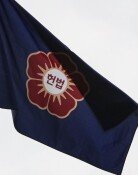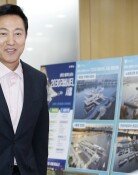Mapping Africa’s natural resources with Korean technologies
Mapping Africa’s natural resources with Korean technologies
Posted April. 25, 2017 07:19,
Updated April. 25, 2017 07:25
“Do you mean that this drone can really help us to measure our land more easily?”
Participants opened their eyes wide with surprise when they hear the presentation of Lee Moon-suk, CEO of Hojung Solution Co., Ltd. and technical advisor of the Korea Land and Geospatial Informatix Corporation (LX), at a university lab in Dar es Salaam, the largest city of Tanzania, on April 7 (local time).
Most attendees are government officials of African countries such as Tanzania, Ethiopia and Kenya. To them, it is essential to secure precise land registration maps to build roads or railways, to conduct river maintenance, and other public works in scale. However, much of their land remained untouched without any maps of land register. For instance, Tanzania, whose land is approximately 10 times larger than that of Korea, has such maps for only 40 percent of the entire land. “By using drones, you can easily shoot aerial videos above river and mountain areas that are not readily accessible," Lee said. "Comparing to ordinary aerial shots, pictures taken by drones are more precise and cost less.”
Located in Central East Africa, Tanzania is an emerging and developing economy. Based on abundant natural resources and tourist attractions such as Kilimanjaro and Serengeti National Park, the country records an annual growth rate of plus or minus 7 percent. However, its current state poses worrisome future. Tanzania’s GDP is mere 2,600 dollars, or one tenth of that of Korea. Without sufficient social overhead capital (SOC), it is very hard to expect the growth of the economy with not enough infrastructure. Hence, Tanzania is highly dependent on official development assistance (ODA) from advanced countries.
The World Bank held the Korea Green Innovation Days (KGID) 2017 at Dar es Salaam early this month for the purpose of meeting the demand for ODA. The World Bank partnered with the Korean government and established the Korea Green Growth Partnership (KGGTF) in 2011. The KGGTF has been injected into 101 projects in 48 countries up until now.
Many participants from governments and public organizations in Africa say in chorus that the KGGTF is indispensable to Africa as the fund is allocated to various fields including road construction, establishment of communications network, installation of sewage treatment equipment, detection system of marine products and others. “The green growth strategy is shared by the world as a key development platform for sustainable growth,” said Vice Minister of Strategy and Finance Song Un-seok .
The partnership with the World Bank, which is deeply engaged in ODA projects of many countries, creates a synergy effect. The Bus Rapid Transit (BRT) line that penetrates Dar es Salaam is one of major achievements of ODA. With the establishment of BRT line thanks to the support from the World Bank, the total transit time has reduced by 2 hours and 45 minutes.
Experience in rapid growth and efforts to transform into eco-friendly city appeal to African government officials greatly. Endeavors to transfer the know-hows of domestic companies are also presenting a good image to local residents. “Tanzania also wants to see the miracle of the Han River," Tanzanian Deputy Minister of Environment January Makamba said. "We are ready to fully cooperate with Korea, a country equipped with the world’s most sophisticated Information and Communication Technology (ICT) and environmental know-hows.”
Jae-Young Kim redfoot@donga.com
Headline News
- Med professors announce intention to leave hospitals starting Thursday
- Bridge honoring Sgt. Moon Jae-sik unveiled in Pennsylvania
- Chief of Staff Chung tells presidential secretaries to stay away from politics
- US FTC bans noncompete agreements
- N. Korea launches cyberattacks on S. Korea's defense companies







